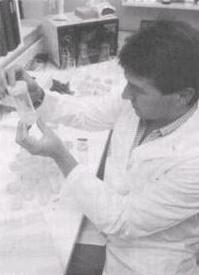


Chapter 1
I Groping In A Strange Environment: 1788-1851
II Farmers Take The Initiative: 1851-1888
III Enter Education And Science: 1888-1927
IV Agricultural Science Pays Dividends: 1927-1987
V Examples Of Research And Development 1928-1988
VI International Aspects Of Agricultural Research
VII Future Prospects
VIII Acknowledgements
References
Index
Search
Help
Contact us

The contributions made to agricultural production and prosperity by plant and animal geneticists in the past have been enormous. Great progress has been made, and continues to be made, by the application of the principles of quantitative genetics, coupled with the objective and accurate measurement of heritable traits, in the selection, breeding and cross-breeding of crops and stock. Yet past progress may be rapidly outstripped by the advances which now seem possible in some newly emerging fields of biotechnology. During recent years basic research on the biochemical manipulation of genetic material has reached the stage at which it is now at least theoretically possible to manipulate the fundamental genetic structures of micro-organisms, plants and animals so that they will grow faster and more efficiently, resist disease, and yield products of much higher quality. The techniques that are being used to achieve these effects encompass a range of sophisticated, manipulative procedures which result in permanent and heritable modifications to genes, cells, tissues, organs or organisms. In theory the potential appears almost boundless and already there are indications of the benefits that will accrue from such research to Australian agriculture.






Research carried out by CSIRO, for example, has shown that there are now good prospects of building into farm crops an entirely new gene which confers the ability to resist attack from viral diseases. Other techniques, involving induced mutations and somacloning to multiply new cultivars, are being used to build specific disease resistance into important crops, and also using this approach a variety of sugar-cane has recently been produced by CSIRO that is resistant to a fungal disease known as 'eyespot'. Efforts are also being made to incorporate genetic resistance to barley yellow dwarf virus into wheat. A new generation of vaccines is being developed by biotechnologists working in industry, universities and CSIRO which will help greatly in the control of many important animal diseases and parasites. Some have reached the stage of field testing and others are now in the experimental pipeline.
Scientists are hopeful that it will become possible to produce new plants, such as cereals, that will fix atmospheric nitrogen, and food crops that will have higher nutritive values for livestock and humans. Work with animals includes a CSIRO program designed to produce a genetically engineered sheep that would boost its production of wool by synthesising its own requirements of cysteine. At the University of Adelaide a 'super pig' has already been developed which grows larger and more efficiently than normal pigs and the same research approach is being undertaken in other laboratories to achieve similar results with cattle and sheep.
Nevertheless, although there are good reasons to be optimistic about the technological advances and innovations that are likely to sustain and improve the productivity and efficiency of agricultural industries in the future, it would be misleading to think that these desirable developments are inevitable or can be achieved without both adequate levels of support from the public and private sectors and the dedication and hard work of individual scientists and technologists.
Organisations in Australian Science at Work - CSIRO
 |
Australian Academy of Technological Sciences and Engineering |  |
© 1988 Print Edition pages 64 - 66, Online Edition 2000
Published by Australian Science and Technology Heritage Centre, using the Web Academic Resource Publisher
http://www.austehc.unimelb.edu.au/tia/066.html